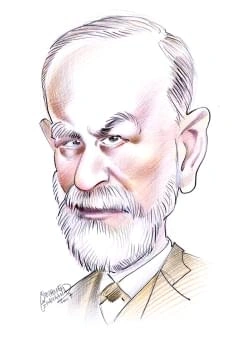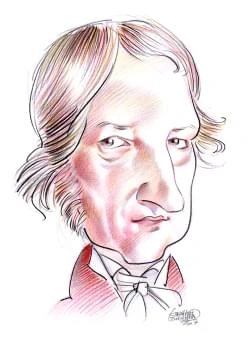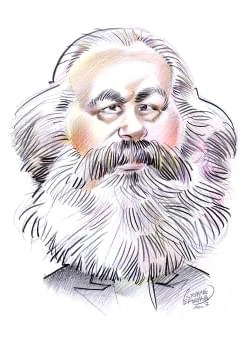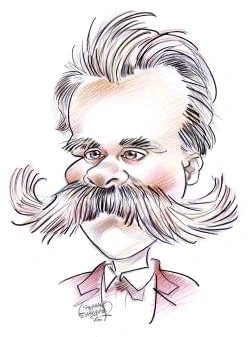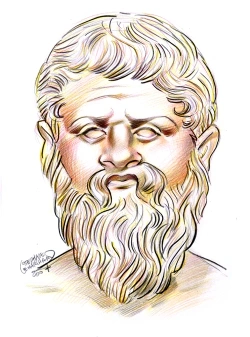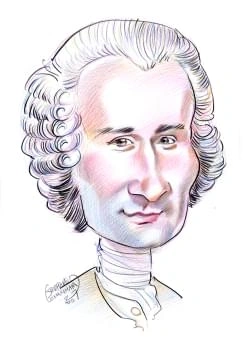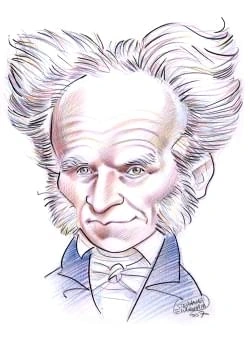681 résultats pour "history"
-
Babylonia - USA History.
Pharmacology, too, doubtless had made considerable progress, although the only major direct evidence of this comes from a Sumerian tablet written several centuriesbefore Hammurabi. C Legal System and Writing Law and justice were key concepts in the Babylonian way of life. Justice was administered by the courts, each of which consisted of from one to four judges. Often theelders of a town constituted a tribunal. The judges could not reverse their decisions for any reason, but appeals from their...
-
United States History - U.
and improved upon the designs of Arab sailing ships and learned to mount cannons on those ships. In the 15th century they began exploring the west coast ofAfrica—bypassing Arab merchants to trade directly for African gold and slaves. They also colonized the Madeira Islands, the Azores, and the Cape Verde Islands andturned them into the first European slave plantations. The European explorers were all looking for an ocean route to Asia. Christopher Columbus sailed for the monarchs of Spain in 149...
-
United States History - U.
and improved upon the designs of Arab sailing ships and learned to mount cannons on those ships. In the 15th century they began exploring the west coast ofAfrica—bypassing Arab merchants to trade directly for African gold and slaves. They also colonized the Madeira Islands, the Azores, and the Cape Verde Islands andturned them into the first European slave plantations. The European explorers were all looking for an ocean route to Asia. Christopher Columbus sailed for the monarchs of Spain in 149...
-
Ancient Rome - USA History.
attributed to Numa, including the selection of virgins to be priestesses of the goddess Vesta. He also established a calendar to differentiate between normal workingdays and those festival days sacred to the gods on which no state business was allowed. His peaceful reign lasted from 715 to 673 BC. Under Tullus Hostilius (672–641 BC) the Romans waged an aggressive foreign policy and began to expand their lands by the conquest of nearby cities like Alba Longa. When the warlike King Hostilius co...
-
Pyramids (Egypt) - History.
limestone debris left over from the construction work. When the workers had completed the pyramid and installed the pyramidion, or cap stone, ramps still covered the surface of the pyramid. As the workers dismantled the ramps from the top down, they slowly exposed the pyramid’s stone surface, which stonemasons smoothed and polished. When the ramp was gone, the pyramid wasdisplayed in its full majesty. B Interior The interior of the Great Pyramid is complex, with a series of passages leading t...
-
James Monroe - USA History.
In October 1786, Monroe resigned from Congress and settled with his bride in Fredericksburg, Virginia, where he began a law practice. His retirement from politics wasbrief. He was soon elected to the town council, and then once again to the Virginia legislature. However, Monroe never lost touch with national politics. He corresponded regularly with both Jefferson and Madison. In 1786 Monroe attended the AnnapolisConvention, which had been called to consider interstate commerce and other matters...
-
James Madison - USA History.
In the spring of 1784 Madison again ran for election to the Virginia assembly, and won. He served nearly three years there, pursuing the same objectives he had foughtfor in Congress. He advocated strengthening the federal government, which was an unpopular position in Virginia, as it was in most of the states. He consistentlysupported measures, at both state and national levels, that would best safeguard the rights of the individual. Madison also continued to oppose any connection betweenchurch...
-
Aztec Empire - history.
and Tlacopan. In 1428 the triple alliance defeated the Tepaneca. Under the Mexica ruler Itzcoatl, his successor Montezuma I, and the Texcocan ruler Netzahualcóyotl, thethree states waged a series of conquests. They eventually established an empire that extended from central Mexico to the Guatemalan border and included many differentstates and ethnic groups, who were forced to pay tribute to the alliance. Tenochtitlán became the dominant power within the alliance. IV AZTEC CIVILIZATION Aztec soc...
-
-
Acropolis - USA History.
The Erechtheum is one of the most elaborate buildings on the Acropolis. Its plan is irregular, probably because of the sloping site and the need to preserve earlier placesof worship on the site or nearby. Porches project from three sides of the Erechtheum, but they are at different heights and are not centered on each side. GracefulIonic columns support the porches on the eastern and northern sides. Elegant caryatids (columns carved in the shape of draped female figures) support the Porch of t...
-
Ethnic Groups in Canada - Canadian History.
Ontario and the Atlantic provinces (Nova Scotia, New Brunswick, Newfoundland and Labrador, and Prince Edward Island). Most of the Irish live in rural areas of NovaScotia, New Brunswick, Prince Edward Island, Ontario, and Québec. The Welsh are by far the smallest group among the British Canadians, and they have also settled inthe Atlantic provinces and Ontario. B Culture The language spoken by British Canadians is mostly English, but some Welsh speak their own Celtic language and some Scots, Gae...
-
Africa - history.
Africa’s other major mountainous regions occur at the northern and southern fringes of the continent. The Atlas Mountains, a system of high ranges, extend for 2,200 km(1,400 mi) across Morocco, Algeria, and Tunisia, roughly parallel to the northern coast. These ranges enclose a number of broad inland basins and plateaus. In the west, theHigh (or Grand) Atlas contains Toubkal (4,165 m/ 13,665 ft), the highest peak of the system. Toward the east, the Atlas consists of two parallel ranges: the Tell...
-
Canada - Canadian History.
Six general landform regions are distinguishable in Canada: the Appalachian Region, the Great Lakes and St. Lawrence Lowlands, the Canadian Shield, the Great Plains,the Canadian Cordillera, and the Canadian Arctic Archipelago. B1 Appalachian Region and Great Lakes and St. Lawrence Lowlands Eastern Canada consists of the Appalachian Region and the Great Lakes and St. Lawrence Lowlands. The Appalachian Region embraces Newfoundland Island, NovaScotia, New Brunswick, Prince Edward Island, and the G...
-
Han Dynasty - History.
However, these reforms faced serious opposition. The feudal barons formed an alliance and rebelled against Wang Mang. They were joined by members of the Liufamily, who were descended from Jingdi (Ching-ti), a former Han emperor, and a civil war followed. As the empire fell into disorder, militant secret societies formedarmed bands and attacked villages and towns. Wang Mang had believed that proper institutions would eventually bring peace to China, but in AD 23, an army led by the Liu clan brea...
-
Qing Dynasty - History.
The Manchus also dealt with the problem of Russian expansion into northeastern Asia. In 1689 the Treaty of Nerchinsk was signed by an envoy from the Manchu courtand a Russian representing Peter the Great. The treaty, the first between China and a Western country, established territorial boundaries and defined rules ofcommerce for the two powers. Through the mid-18th century, the Manchus continued to consolidate their power. In 1720 the Qing ruler sent forces to fight the Mongols in Tibet and the...
-
Missouri - USA History.
Saint Francois Mountains, at the eastern end of the crest of the dome. Only in these mountains have the sedimentary rocks been sufficiently eroded away so that theunderlying igneous rocks are exposed. They form the rounded, knoblike peaks of an old mountain range. The peaks project, in isolation or in clusters, between 230 and300 m (750 and 1,000 ft) above the surrounding sedimentary basins. One of these knobs, Taum Sauk Mountain, reaches 540 m (1,772 ft) above sea level and is thehighest point...
-
Han Dynasty - history.
of merit rather than birth. Written examinations were adopted as a means of determining the best qualified people, although use of the examinations in actually makingappointments was limited. A school was established at the capital for training government officials. The administrative bureaucracy was systematized, and a career civilservice was created and extended through much of the empire. Although personally interested in the magical side of Daoism, Wudi made a descendent of Confucius the sup...
-
-
Han Dynasty - history.
of merit rather than birth. Written examinations were adopted as a means of determining the best qualified people, although use of the examinations in actually makingappointments was limited. A school was established at the capital for training government officials. The administrative bureaucracy was systematized, and a career civilservice was created and extended through much of the empire. Although personally interested in the magical side of Daoism, Wudi made a descendent of Confucius the sup...
-
Arkansas - USA History.
temperature rises to the upper 30°s C (lower 100°s F). C2 Precipitation Arkansas receives about 1,000 to 1,300 mm (about 40 to 50 in) of precipitation a year, and some areas receive even more. Most of the rain comes during winter andspring and at times is so heavy as to cause flooding. Snow is rare in the south but amounts to more than 250 mm (10 in) a year in the mountains. C3 Growing Season Arkansas has a long growing season. It averages 211 days for the state as a whole and ranges from 241...
-
Ancient Egypt - USA History.
around 4500 BC. The style and decoration of the pottery found at these sites differ from those of pottery found in Upper Egypt. The northern type eventually fell out of use. Other differences between the peoples in Upper Egypt and Lower Egypt include the nature of their architecture and the arrangements for burial of the dead, thelatter perhaps signifying differing religious beliefs. B Unification and Early Dynastic Period By 3500 BC, the settlement of Hierakonpolis, located on the west bank...
-
Wyoming (state) - USA History.
The basins, which lie in the rain shadow of mountains, are very dry, with an average annual precipitation of about 250 mm (about 10 in) or less; the Great Plains regionhas an annual average of about 380 mm (about 15 in), and the Black Hills region receives slightly more. Thunderstorms and hailstorms are relatively frequent insummer. The annual snowfall ranges from about 500 mm (about 20 in) in the Bighorn Basin to well over 5,100 mm (over 200 in) in the higher mountains, where annualprecipitatio...
-
Hawaii (state) - USA History.
limestone along the coast. The volcanoes of the Hawaiian Islands are all so-called shield volcanoes, or lava domes. Unlike the volcanoes of Alaska and South America, those of Hawaii were notcreated by very explosive eruptions. Formed mostly by lava flows, they are great rounded mountain masses, rather than steep-sided cones. Mauna Kea, dormant forcenturies, is the highest mountain in the state. It rises to 4,205 m (13,796 ft) above sea level, and its summit is dotted with cinder cones formed by...
-
Bill Clinton - USA History.
When Arkansas governor David Pryor ran for the U.S. Senate in 1978, Clinton ran for governor. He promised to improve the state’s schools and highways and toimprove economic conditions so that more jobs would be created. At that time, the average income of people in Arkansas ranked 49th among the 50 states. Clinton woneasily, receiving 60 percent of the vote against four opponents in the Democratic primary election and 63 percent against the Republican candidate, Lynn Lowe, in thegeneral election...
-
Greek Art and Architecture - history.
powerful independent city-states. From 334 to 323 BC, Alexander the Great extended his father's empire into Asia Minor (now Turkey), Syria, Egypt, Persia, Afghanistan, and as far as India. D The Hellenistic Period (323-31 BC) Although Alexander the Great extended Greek civilization far beyond the Greek mainland and the boundaries of the Aegean Sea, his empire did not survive his death in 323.After Alexander died, his generals and successors divided the empire into a number of kingdoms: Ptolem...
-
Assyria - history.
Assyrian ReliefThis Assyrian relief, made of alabaster, was found at the palace of Assyrian king Sargon II at Khorsabad (now in Iraq). It depictstimber from valuable cedars of Lebanon being shipped by sea. More than 2,500 years old, the sculpture is now in the Louvre in Paris,France.Giraudon/Art Resource, NY Assyrian culture resembled that of Babylonia in most respects. Except for the royal annals, for example, Assyrian literature was practically identical with its Babyloniancounterpart, and the...
-
-
Ottoman Empire - history.
Süleyman ISüleyman I, the sultan of the Ottoman Empire during its zenith, became known in the western world as Süleyman the Magnificent. Hewas known among his own people as the Lawgiver because he revised the legal system of the empire. Süleyman had several sons,two of whom he executed after quarreling with them.Culver Pictures Bayazid died in captivity, a suicide according to some accounts, and a struggle for succession to the sultanate broke out among his sons. Muhammad I (reigned 1413-1421)ev...
-
Qing Dynasty - history.
ministries and recruited talented Chinese men who had lost confidence in Ming rule to fill some of the posts. In 1635 Abahai renamed his people “Manchu” to give them a sense of a fresh start, free from past ties to the Chinese. In 1636 he declared the beginning of a new dynasty,which he named Qing (Chinese for “pure”). While the Jurchen transformed their social and military organization north of the Great Wall, China to the south faced serious crises. In the 1620s and 1630s, bad weatherruined...
-
Métis - Canadian History.
authority in the Northwest Rebellion. As in 1869, they were worried about title to their river lots, which were unsurveyed and were therefore omitted from the surveyadopted by the Department of the Interior. The Métis demanded a distribution of land and scrip, as had occurred in Manitoba after 1870. The Métis action at Batoche encouraged several bands of indigenous nations (Cree, Assiniboine, and Sioux) to take up arms. Threatened with a general rising across theNorthwest Territories, the Canadi...
-
Ancient Egypt - history.
The Nile River runs through the ancient city of Thebes in eastern Egypt. For a time, beginning in 2040 bc, Thebes was the capital ofEgypt.Farrell Grehan/Photo Researchers, Inc. According to inscriptions and documents found by archaeologists, the Egyptians called their country Kemet, meaning “the Black Land,” a reference to the dark, fertile soil that remained after the Nile floodwaters had receded. They also used another term, Deshret, or “the Red Land,” a designation for the desert sands th...
-
Assyria - USA History.
villages and cities were ransacked and razed, but no attempt was made to annex their territories. In the course of time this pattern of conquest changed, and the Assyrian rulers began to make Assyria the center of a new empire by incorporating the conquered landsinto their domain, although probably not according to a conscious plan. Toward the end of the 10th century BC, for example, Adad-nirari II annexed the Aramaean state centering on Nisibis, east of the Habur River. His son, Tukulti-Ninurt...
-
Greek Art and Architecture - USA History.
The struggle between these two city-states and their allies ultimately led to the Peloponnesian War (431-404 BC), which Sparta won. Despite this conflict, the 5th century, often called the Classical period, is usually considered the culmination of Greek art, architecture, and drama, with its highest achievements being the Temple ofZeus at Olympia, the Parthenon in Athens, and the plays of Athenian dramatists Aeschylus, Sophocles, Euripides, and Aristophanes. The 4th century, or Late Classical p...
- Persia - History.
-
Asia - History.
Borneo, the world’s third largest island after Greenland and New Guinea. To the southeast is the Timor Sea separating the Asian island of Timor from the Australiancontinent. The Indian subcontinent is flanked by the Bay of Bengal on the east and the Arabian Sea on the west. The island of Sri Lanka and the much smaller Maldives andNicobar Islands trail away to the south. The Arabian Sea’s Gulf of Aden, the Red Sea, the Mediterranean Sea, and the Black Sea form an arc along the western rim of Asia...
-
-
Roman Art and Architecture - History.
Racecourses or circuses were also built in many cities for holding chariot races and horse races. Rome’s circus-shaped Piazza Navona occupies the site of one that wasbuilt during the reign ( AD 81-96) of the emperor Domitian. The largest circus in Rome, the Circus Maximus, held about 200,000 spectators. E Public Baths Large cities and small towns alike also had public baths ( thermae ); under the Republic they were generally made up of a suite of dressing rooms and bathing chambers with hot- ,...
- Prehistory & history
-
W. E. B. Du Bois - USA History.
VI PEACE ACTIVIST After World War II (1939-1945), Du Bois became increasingly involved in promoting world peace and nuclear disarmament. In 1950 he became chairman of the PeaceInformation Center in New York City, a group whose stated objective was to gather signatures in the United States for a global petition to ban the use of nuclearweapons. In July of that year, after the organization had gathered more than one million U.S. signatures, the Peace Center was labeled a Communist-front organiza...
-
Sumer - History.
In the late 19th century, a series of excavations was undertaken at Lagash by French archaeologists working under the direction of the Louvre and at Nippur byAmericans under the auspices of the University of Pennsylvania. The French excavations at Lagash were conducted from 1877 to 1900 by Ernest de Sarzec; from 1903to 1909 by Gaston Cros; from 1929 to 1931 by Henri de Genouillac; and from 1931 to 1933 by André Parrot. The excavations at Nippur were conducted (1889-1900)by John Punnett Peters, J...
-
Babylonia - history.
Below the house was often located a mausoleum in which the family dead were buried. The Babylonians believed that the souls of the dead traveled to the nether world,and that, at least to some extent, life continued there as on earth. For this reason, pots, tools, weapons, and jewels were buried with the dead. B Technology The Babylonians inherited the technical achievements of the Sumerians in irrigation and agriculture. Maintaining the system of canals, dikes, weirs, and reservoirsconstructed...
-
Chiang Kai-shek - History.
Even one of Chiang's allied commanders, Zhang Xueliang, who had been expelled from Manchuria after the Mukden Incident, came to doubt the wisdom of Chiang'sapproach. In 1936 Zhang held Chiang prisoner in Xi'an until Chiang agreed to join the Communists in an allied front against Japan. Chiang later denied making anyagreement. On July 7, 1937, near the Marco Polo Bridge on the outskirts of Beijing, a Chinese patrol and Japanese troops on a training exercise clashed, and full-scalewar broke out be...
-
John Diefenbaker - Canadian History.
only Conservative elected from Saskatchewan, which had gone solidly to the Co-operative Commonwealth Federation (CCF), a coalition party dedicated to social andwelfare reforms. In 1952 the Liberals in Saskatchewan abolished Diefenbaker's Lake Centre seat altogether by merging it with the neighboring legislative district of Moose Jaw, where theCCF had a vast majority. In 1953 Diefenbaker decided to run for election in Prince Albert. Again he was the only Conservative returned to Parliament fromSa...
-
Michael Jordan
I
INTRODUCTION
Michael Jordan, born in 1963, American professional basketball player, considered by many to be the greatest player in basketball history.
playoffs the Bulls pushed the Pistons to seven games in the Eastern Conference Finals before losing again. As he grew older, Jordan made a concerted effort to help his teammates reach their own potential. The result of his renewed commitment to team-oriented play was theBulls’ first NBA championship title. After the 1990-91 season the Bulls swept the Pistons in the Eastern Conference Finals and then defeated the Los Angeles Lakers inthe NBA Finals. Jordan won the league MVP award for the second...
-
-
Prince Edward Island - Canadian History.
hectares (109 acres) each. In 2006 there were 1,700 farms, of which the average size was 148 hectares (366 acres). In 2005 the total farm cash receipts were C$510million. The most important agricultural products in terms of value include potatoes, milk and cream, cattle and calves, hogs, tobacco, vegetables, eggs, hens andchickens, and furs. For the most part the island’s agriculture is diversified, rather than specialized, because of the lack of a large urban industrial population within easy r...
-
Mesopotamia - history.
AssyriaAssyria flourished in the region the ancient Greeks called Mesopotamia. An Assyrian king established what was probably the firstcentrally organized empire in the Middle East, between 1813 and 1780 bc. In defending their territory from nomadic invasions,Assyrians gained a reputation in the ancient Middle East for being relentless and ruthless warriors.© Microsoft Corporation. All Rights Reserved. Beginning about 1350 BC, Assyria, a north Mesopotamian kingdom, began to assert itself. Assyr...
-
Sumer - history.
By the 23rd century BC the power of the Sumerians had declined to such an extent that they could no longer defend themselves against foreign invasion. The Semitic ruler Sargon I (reigned about 2335-2279 BC), called The Great, succeeded in conquering the entire country. Sargon founded a new capital, called Agade, in the far north of Sumer and made it the richest and most powerful city in the world. The people of northern Sumer and the conquering invaders, fusing gradually, became known ethnical...
-
Kwame Nkrumah - history.
Nkrumah guided the Gold Coast to independence in 1957 under the name Ghana, after an ancient West African empire. IV RULER OF GHANA Nkrumah built a strong central government and attempted to unify the country politically and to muster all its resources for rapid economic development. As a proponent ofPan-Africanism, he sought the liberation of the entire continent from colonial rule, offered generous assistance to other African nationalists, and initially pursued a policy ofnonalignment with ei...
-
Mohandas Gandhi - History.
released two years later because of failing health. By 1944 the Indian struggle for independence was in its final stages, the British government having agreed to independence on condition that the two contendingnationalist groups, the Muslim League and the Congress Party, should resolve their differences. Gandhi stood steadfastly against the partition of India but ultimately hadto agree, in the hope that internal peace would be achieved after the Muslim demand for separation had been satisfied....
-
Silk Road - History.
and high in value because they were carried on the backs of the limited number of camels in each caravan. Thus, of necessity they were luxury items, not bulky rawmaterials or essential goods for daily use. The oases and towns along the route, which were located in or near remote areas, profited from the Silk Road trade and reliedon it for their existence. The great empires of Persia, China, and Rome, however, could easily have survived without the commerce in luxury goods. V SPREAD OF RELIGION A...
-
Utah - USA History.
Temperatures decrease from the south to the north in the state. In the mountains the average temperature drops about 0.5°C (about 1°F) for every about 300 m(about 1,000 ft) rise in elevation. Average July temperatures range from less than 16°C (60°F) in the mountains to more than 27°C (80°F) in a few locations insouthern Utah. At Salt Lake City average July temperatures range from a low of 18°C (64°F) to a high of 33°C (92°F). There is a great variation between daytime andnighttime temperatures,...
-
Nebraska - USA History.
by natural resource districts to limit the rate of pumping for irrigation. C Climate Nebraska has a typical continental climate with wide seasonal variations in temperature. C1 Temperature Winter temperatures below -20°C (0° F) and summer temperatures in the upper 30°s C (lower 100°s F) are common. The average January temperature varies from about -7° C (about 20° F) in the northeast to about -2° C (about 29° F) in the southwest. The average for July, thehottest month, ranges from about 26° C...
-
-
Asia - history.
the Himalayas, the world’s highest mountain system. The Pacific Ocean plate drifted westward, scraping along the Eurasian plate and slipping under its coastal edge. This created the islands of Japan, Taiwan, the Kurils, theRyūky ūs, and the Philippines. Southeast Asia lies at the intersection of the Eurasian, Pacific Ocean, and Indian Ocean plates. Over time the contact between these platescreated the mountain ranges of mainland Southeast Asia. The continued slow movement of the plates causes fr...
-
California - USA History.
The Basin and Range province is an arid area of mountain ranges, basins, and deserts. In California it is represented primarily by parts of the Great Basin and SonoranDesert sections. Within the Great Basin lies Death Valley, whose lowest elevation, 86 m (282 ft) below sea level, is the lowest point in the Western Hemisphere. TheSonoran Desert section is characterized by numerous flat plains separated by low but rugged ranges. It includes the extensive Mojave, or Mohave, Desert. Also in thisprov...
}})
